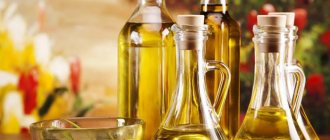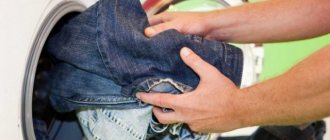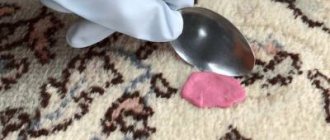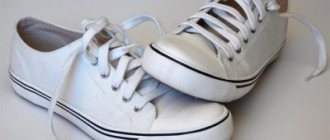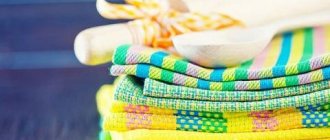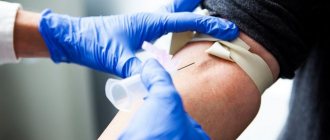How to remove sea buckthorn oil from clothes? This question is often asked by housewives. After all, sea buckthorn oil stains are one of the most persistent, and recipes that help cope with other stains are powerless here. It is difficult to remove, because the natural pigment present in sea buckthorn, binding to fat, becomes persistent, and when absorbed into the fabric, stains it.
But still the situation is not hopeless. If such contamination appears on your clothes, you can wash it using traditional methods or purchase special products to remove persistent stains. Of course, if sea buckthorn oil or a cosmetic product based on it gets on your clothes, it is advisable to immediately remove it without letting it dry. Fresh stains are much easier to remove.
What you need to know before withdrawal
The choice of one or another method of removal depends on the type of tissue and the degree of contamination. In this case, you should be guided by the following rules:
- Each product is first tested on a small, inconspicuous area. Different types of tissue may react differently. For some it may be suitable, for others it will leave faded stains.
- When removing dirt from the back side, always place a clean napkin. This will prevent the stain from spreading.
- The fresher the stains, the better they are removed. After removing dried and old stains, yellowish traces most often remain.
- Items with incompletely removed stains can only be dried naturally. Using a hair dryer or other device will set the stains.
- When machine washing, do not use automatic drying at the end of the cycle. Under the influence of hot air, incompletely washed stains will firmly attach to the fabric fibers.
- Most stain removers cannot be used on velvet, silk or wool. They require a special approach. To clean them, use either special stain removers or take the item to the dry cleaner.
Removing fresh contaminants
Sea buckthorn oil contains a large amount of carotene, which gives it a rich orange color. In fact, it is a natural dye. Upon contact with fabric, oil and carotene penetrate the fibers, leaving permanent stains of a rich orange color.
The longer they remain on the fabric, the stronger the bond. That is why fresh stains from sea buckthorn oil are washed off much easier. But even despite this, you will have to tinker with its removal. A number of means can be used for this.
Starch, soda and salt
You can remove a fresh sea buckthorn stain with salt, soda or starch. They are almost always on hand.
They are poured onto the area of contamination and rubbed in a little. The item treated in this way is left for 30-40 minutes. Afterwards, shake off the powder and wash the clothes as usual.
Dishwashing gel
The substances included in the gel actively break down the components of sea buckthorn oil. Apply it to a pre-moistened cloth, then gently foam it and leave for 2-3 hours. It is most convenient to apply the gel with a small brush, such as a toothbrush.
Note! For greater efficiency, the stain is treated both from the outside and from the inside.
Later the clothes are washed in a washing machine.
Talcum powder or baby powder
To remove a fresh stain, you can also use talc or baby powder made from it. They are poured directly onto the dirt and covered with a paper napkin.
Then iron it with an iron. Hot talc perfectly absorbs oil, and the remaining dirt can be washed off with regular powder.
Boiling water
The easiest way to wash off sea buckthorn oil is boiling water. This method is suitable for removing small stains. The soiled item is placed on a wire rack over a basin or other container. Then boiling water is poured onto the area of contamination.
Laundry soap
How to quickly and easily wash sea buckthorn oil from clothes if you only have regular laundry soap on hand? You need to thoroughly soap the stained area and let the item sit for 30-40 minutes. Then wash it in plenty of water.
Turpentine and ammonia
A mixture of ammonia and turpentine, prepared in a 1:1 ratio, copes well with greasy stains, including sea buckthorn. The product is applied to the stain for 30-40 minutes, after which the item is washed as usual.
How to remove sea buckthorn oil from clothes if the stain is old?
Any old stains are always more difficult to remove. The same is the case with sea buckthorn liquid, if the fat has already been washed off, but the pigment still remains on the fabric. How to wash off sea buckthorn oil in this case? Try one of the following remedies.
Solvents
Some solvents will help you deal with problem stains from sea buckthorn liquid on fabrics that are resistant to aggressive chemicals, such as cotton: acetone, white spirit, purified gasoline.
Important! If you don't find any solvent in your home, you can try removing the stain with nail polish remover.
Important! Aggressive solvents cannot be used in all cases. When removing dirt from delicate fabrics such as silk or velvet in this way, there is a high probability of damaging the material. For such products, you can try nail polish remover that does not contain acetone.
Turpentine and ammonia
Instead of using special products, you can independently prepare a mixture of ammonia and turpentine, mixing them in equal quantities.
Important!
With this solution you can quite easily remove sea buckthorn oil from clothes made from delicate fabrics.
Important! If you are not sure about the safety of the chosen product, it is better to test this liquid on an inconspicuous area of clothing.
Sunflower oil, washing powder and bleach
Our grandmothers also used this method. Sunflower oil dissolves and absorbs the orange pigment. We bring to your attention this method, proven over the years, of how to remove sea buckthorn oil from clothes, in a modern interpretation:
Important! In this solution, for effective washing, you can soak things with other stubborn stains, for example:
Potato starch and turpentine
This method is quite effective in combating bright, greasy stains that sea buckthorn oil leaves behind on fabrics:
Important! You can use gasoline for lighters.
Important! If the stain is not completely removed the first time, do not iron the item under any circumstances, otherwise the stain will be even more difficult to remove.
Hydrogen peroxide
When you are faced with a situation where, despite all the efforts made, there is still a light orange blot on white clothes, you can simply bleach it with hydrogen peroxide:
Important! Please note that hydrogen peroxide is actually a very aggressive agent. With prolonged interaction, it is able to dissolve even the fabric fibers themselves, and not the dirt on them. Therefore, do not overexpose the product onto things, so as not to end up with a hole instead of a stain.
Removing old stains
How can you remove sea buckthorn oil stains if they have already dried? For such cases, there are also several proven and effective methods.
Acetone, white spirit
Chemical solvents such as acetone or white spirit are excellent for dissolving dried stains.
Since they act quite aggressively, you should definitely wear rubber gloves when working with them.
Using a cotton swab or disk, apply the solvent to the stained area and rub in gently. Afterwards, the item is rinsed in warm water and immediately washed with powder.
Vinegar
Our great-grandmothers knew how to remove sea buckthorn oil from clothes using vinegar. This method allows you to remove stains even from such delicate fabric as silk.
Before use, 70% vinegar essence is diluted in warm water at the rate of 1 tablespoon per liter of water. The contaminated item is immersed in the solution for 40 minutes. After that, it is washed as usual.
Antipyatin
Antipyatin laundry soap is a universal solution for removing greasy stains, including sea buckthorn stains. You can buy it in almost any store that sells household chemicals.
To remove old stains with it, the item is moistened with water and soaped. After 30 minutes, the procedure is repeated. If necessary, soap can be applied again. After which the clothes are washed with powder.
Household chemicals
In the store you can buy a ready-made product designed to remove stains. Stale contaminants are removed with solutions containing chemical components. Use carefully so that the item is not damaged.
Vanish Gold
Presented in the form of a powder that removes greasy stains. To effectively remove blots, soak for a while, after which you can start washing. Suitable for washing colored items. The paint shades remain just as rich.
See also
How to properly wash a tent in an automatic washing machine and is it possible?
Amway Pre Wash
It is in the form of a solution, the bottle is equipped with a sprayer. After applying the product to the stains, they will turn white over time. Once this has happened, the clothes are washed in the usual way.
Udalix Oxi Ultra
Effective in water with a temperature of 60 °C. Suitable for all fabrics except wool and silk. Removes both fresh and old stains.
Sarma Active
This product does not require pre-soaking or other actions. To restore cleanliness to the product, Sarma Active is added to the regular powder during washing. Before use, it is recommended to carefully study the instructions, as the product is not suitable for all types of fabric.
Stain remover "Minutka"
Suitable for casual wear and bedding set. It looks like a transparent paste. The composition is applied to the stain and left until it turns white. After drying, it is removed from the laundry with a brush, and the items themselves are washed in a machine.
Universal method (time-consuming)
This method can be used to remove stains from any type of fabric. Its only drawback is the large time investment.
To prepare the product, you need to mix 100 g of washing powder, dry oxygen bleach (such as BOS) and vegetable oil in 10 liters of moderately hot water.
The contaminated item is soaked in this solution overnight, after which it is washed as usual.
Types of oils
There is a certain classification of oils. There are different types:
- easily soluble and sparingly soluble;
- non-drying, semi-drying and drying;
- oils of animal, vegetable and technical origin.
The most common types of oils should be considered:
- Sunflower oil of vegetable origin is obtained from sunflower seeds, semi-drying. The most used oil in cooking, it is used for dressing salads, frying, and stewing. It is also used in everyday life, for example, to lubricate locks, handles, and door hinges. Also used in the production of soap and other products.
- Vaseline oil is a purified fraction of petroleum, which is obtained after the distillation of kerosene. Hardly soluble substance, non-drying. Widely used in the medical, pharmaceutical, and food industries for lubricating equipment. Included in creams, ointments, lipsticks.
- Flaxseed oil of vegetable origin, drying. It is used both in medicine and in cooking, and also in cosmetology. In medicine, it is used to replenish the level of unsaturated fatty acids necessary for the body. In cosmetology it is used as a component of anti-aging creams, face and body masks. In cooking - as a salad dressing, and also add a piquant taste to the dish.
Hydraulic oil is a technical, semi-drying, complex substance
This is an important component for any hydraulic system. Used in casting machines, presses, heavy manipulators, machine tools, robots, plastic molding machines and many other industries.
Transformer oil is a refined fraction of petroleum, which is mineral oil
It is obtained after the distillation of oil, when the fraction boils at 300-400 degrees Celsius. The main property of this oil is electrical insulation.
Castor oil is a vegetable oil extracted from the fruits of the castor bean plant and is a mixture of glycerides of ricinic, linoleic and oleic acids. It is actively used in medicine against various ailments. There are also legends on the Internet about the magical properties of the oil, so they began to use it in cosmetology to enhance the growth of hair and eyelashes.
- Lamp oil. Everyone knows about its use in churches, since the Lord commanded that oil be burned in a lamp. Lamp oil was previously called wooden oil in another way. Currently, it is used in medical practice in the form of a mixture of purified oils.
- Transmission oils are lubricating oils used to lubricate gearboxes, transfer cases, final drive axles, steering mechanisms and much more.
- Vegetable oil is a group of oils that is allowed for consumption on some days of religious fasting. These are sunflower, corn, mustard and other vegetable oils.
If the smell of sea buckthorn remains
Sea buckthorn leaves not only persistent stains. Its smell can remain on clothes for a long time after removal and washing. This is explained by the increased stability of aromatic components. There are several ways to remove the specific odor of sea buckthorn.
Vinegar solution
A solution of acetic acid works very well to remove persistent odors. To prepare it, 3-4 tablespoons of 9% vinegar diluted in 5 liters of warm water is enough.
The item is thoroughly rinsed and then hung out to dry. If the smell is very strong, rinsing can be combined with washing. But in most cases, you can get by with a simple rinse.
Fabric softener
Fabric softener is perfect for eliminating sea buckthorn odors. It not only removes unpleasant odors, but gives clothes a pleasant aroma. Use it according to the attached instructions.
Soda solution
A solution of regular baking soda does an excellent job of removing the persistent odor of sea buckthorn. To prepare it you will need 100 grams of soda and 3 liters of water.
The resulting solution must be mixed well. Clothes are soaked in it for 2 hours, after which they are rinsed in plenty of water and hung out to dry.
General Helpful Tips for Removing Stubborn Stains
Sometimes even the most powerful stain removers cannot cope with sea buckthorn stains. If marks remain on white fabric, hydrogen peroxide will help remove them.
The area of contamination is generously moistened with it. After 15-20 minutes, the item is rinsed in plenty of water. This method is not applicable for colored fabrics. Peroxide leaves burnt areas on them.
If home remedies fail to remove sea buckthorn stains, you can also try dry cleaning. Washing there is carried out using professional chemicals, which easily remove even the most difficult stains.
Despite the fact that stains from sea buckthorn oil are quite persistent and capricious. With a timely and correct approach, they can still be removed without a trace.
Elimination of old traces
Having let grease stain their clothes, many people make the serious mistake of putting off removing the stain until later. Delay leads to the fact that even after washing with a good detergent, the stain does not disappear. Quite often a situation arises when, having been in the washing machine, the dirt is strongly absorbed into the fibers of the fabric. Getting rid of it is problematic, but it's worth a try.
If necessary, the procedure is repeated several times until the result is satisfactory. If the material is bright in color, then it is better to avoid using vinegar and hydrogen peroxide. Otherwise, the product will become discolored.

